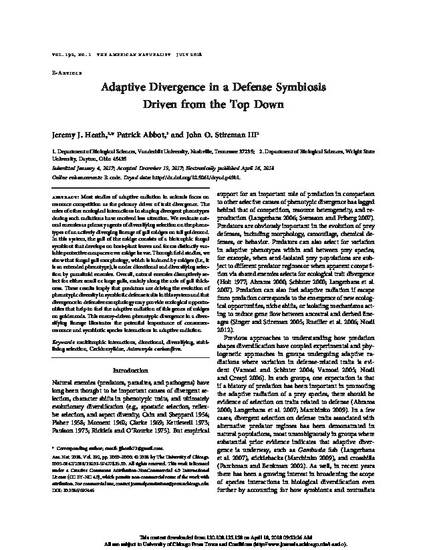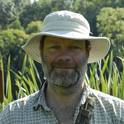
Article
Heathetal2018Adaptiveradiationfromthe top-down.pdf
The American naturalist
(2018)
Abstract
Most studies of adaptive radiation in animals focus on resource competition as the primary driver of trait divergence. The roles of other ecological interactions in shaping divergent phenotypes during such radiations have received less attention. We evaluate nat-ural enemies as primary agents of diversifying selection on the pheno-types of an actively diverging lineage of gall midges on tall goldenrod. In this system, the gall of the midge consists of a biotrophic fungal symbiont that develops on host-plant leaves and forms distinctly var-iable protective carapaces over midge larvae. Through field studies, we show that fungal gall morphology, which is induced by midges (i.e., it is an extended phenotype), is under directional and diversifying selec-tion by parasitoid enemies. Overall, natural enemies disruptively se-lect for either small or large galls, mainly along the axis of gall thick-ness. These results imply that predators are driving the evolution of phenotypic diversity in symbiotic defense traits in this system and that divergence in defensive morphology may provide ecological opportu-nities that help to fuel the adaptive radiation of this genus of midges on goldenrods. This enemy-driven phenotypic divergence in a diver-sifying lineage illustrates the potential importance of consumer-resource and symbiotic species interactions in adaptive radiation.
Keywords
- multitrophic interactions,
- directional,
- diversifying,
- stabi-lizing selection,
- Cecidomyiidae,
- Asteromyia carbonifera.
Disciplines
Publication Date
2018
Citation Information
John Stireman. "Heathetal2018Adaptiveradiationfromthe top-down.pdf" The American naturalist (2018) Available at: http://works.bepress.com/john_stireman/87/
